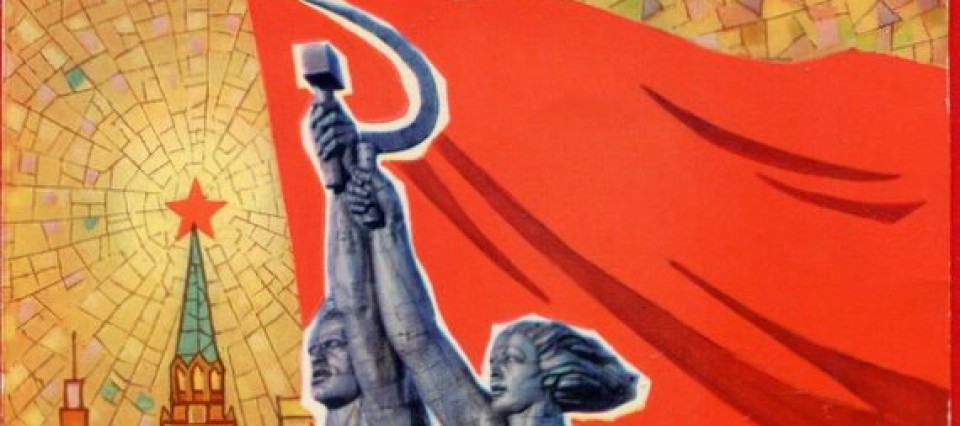Tags

During the late 1950’s and into the 1960’s, the Soviet Union was not only concerned with its conflict in the West, but also with its neighbors to its South-East. The imperialist Chinese and Soviets began butting heads. Many political figures regarded the Chinese as descendants of the Mongol hordes and feared a second invasion. Along with their fears, the Chinese were negotiating immigration policies with the Americans, which led to the 1965 Immigration Act. The increase in tension between both Chinese and Russian translated to confrontation along the southern Sino-Soviet border.
The initial tensions began in the late 1950’s. Khrushchev had been lending Mao assistance in development of nuclear weapons in 1954. Mao had also helped Khrushchev maintain leadership during an attempted coup. However, when the People’s Republic of China (PRC) did not hand over a captured American Sidewinder missile in 1958 and Khrushchev’s leadership now secure, the Soviets decided not to send an Atomic weapon model to the Chinese. Mao, infuriated with the lack of support, deemed the Soviets as weak communists, splitting the communists into pro-Soviets and pro-Chinese.

Tensions continued to rise when in 1967 the Soviets claimed the Chinese illegally detained the Soviet steamship, Svirsk, and captured the captain. The conflict between the two entities finally reached a breaking point in 1969 when regular army forces clashed over Damanskii Island (Chenpao Island to the Chinese). Further clashes occured along the Xinjiang-Kirghiz border. It is unknown why Mao pressed for continued conflict during his cultural revolution but by October of 1969 the Soviets and Chinese agreed to reopen negations regarding the border disputes.

Although, the dispute between both parties led to few casualties, it still showed that the communism globally were not in universal agreement and unification.
Sources:
“CHINESE AUTHORITIES CONTINUE PROVOCATIONS.” The Current Digest of the Russian Press [Minneapolis] 30 Aug. 1967, Vol. 19 ed., No. 32 sec.: 13. The Current Digest of the Russian Press. Web. 17 Nov. 2015.
“The Chinese Border Images.” Seventeen Moments in Soviet History. N.p., 05 Aug. 2015. Web. 17 Nov. 2015.
“The Chinese Border.” Seventeen Moments in Soviet History. N.p., 22 June 2015. Web. 17 Nov. 2015.
“Origins of the 1965 Immigration Act.” The 1965 Immigration Act : Asian-Nation. N.p., n.d. Web. 17 Nov. 2015.
Click to access soviet_policies_twrds_chinas_nuclear_weapons_prgm_1.pdf

Very interesting! I had no idea that there were tensions between the Soviets and Chinese in the 1950s-60s. Communism is communism, but it sounds like it reached a point similar to capitalist nations; ideals may be the same, but country support is another issue entirely. Mao was a hard-line leader, so it surprises me that he tolerated so much disdain from the Soviet government in terms of defense policies. Luckily the issues blew over without war, because that may have been an intense conflict.
LikeLike
Nobody in the West during this time period ever really realized that not all Communist nations were built the same; they just lumped them all into one big category. Your last picture of Mao and Khrushchev really describes the struggles the two countries had with each other. Thanks for sharing this little known part of history!
LikeLike
The Chinese and Soviets not being close allies probably helped out the West for much of the Cold War. If the two communist powers worked closely together, then things might have turned out a lot differently.
LikeLike
I had no idea of this conflict in the west. I always had the idea that Russia was more of a big brother to China once it became a communist country. All of the communist problems in southern Asia must have caused a lot of problems in the Soviet government while they also bashed heads with us.
LikeLike
Some wonderful insight about the politics of the Sino-Soviet relationship here, but how does this connect with Soviet culture?
LikeLike
The relationship between the Chinese and Soviet communists is a very interesting display of noncooperation between two seemingly similar nations. These two nations given their close proximity and seemingly similar political views would have seemed like a great alliance.
LikeLike